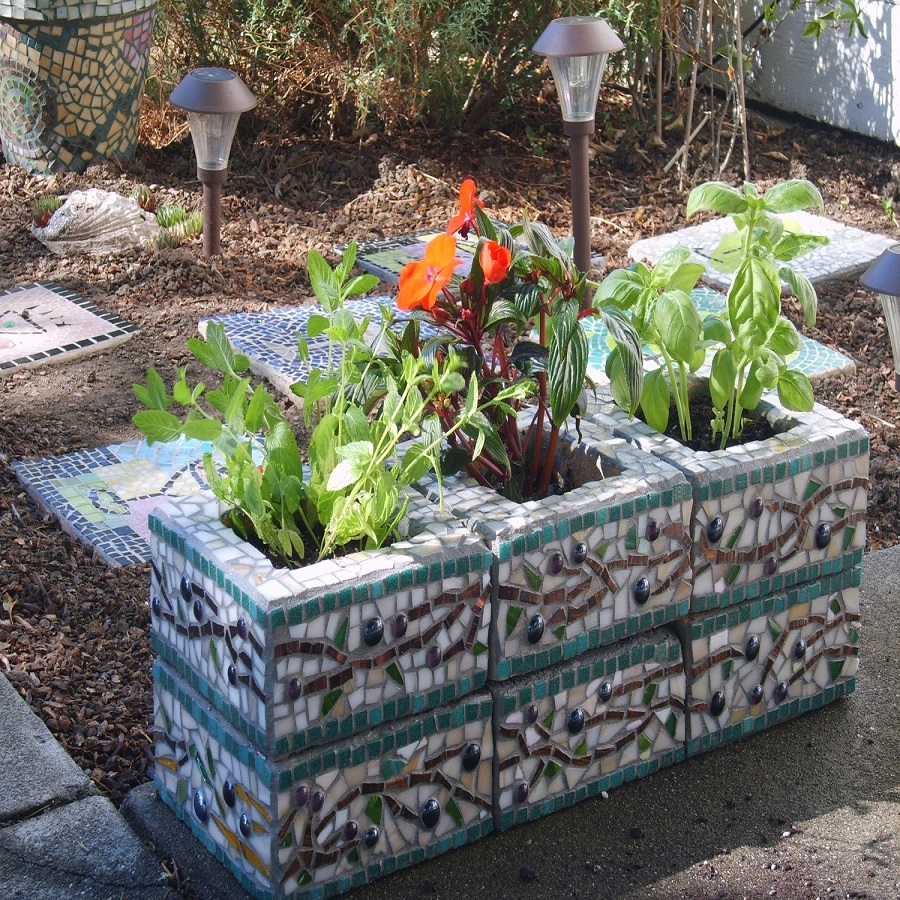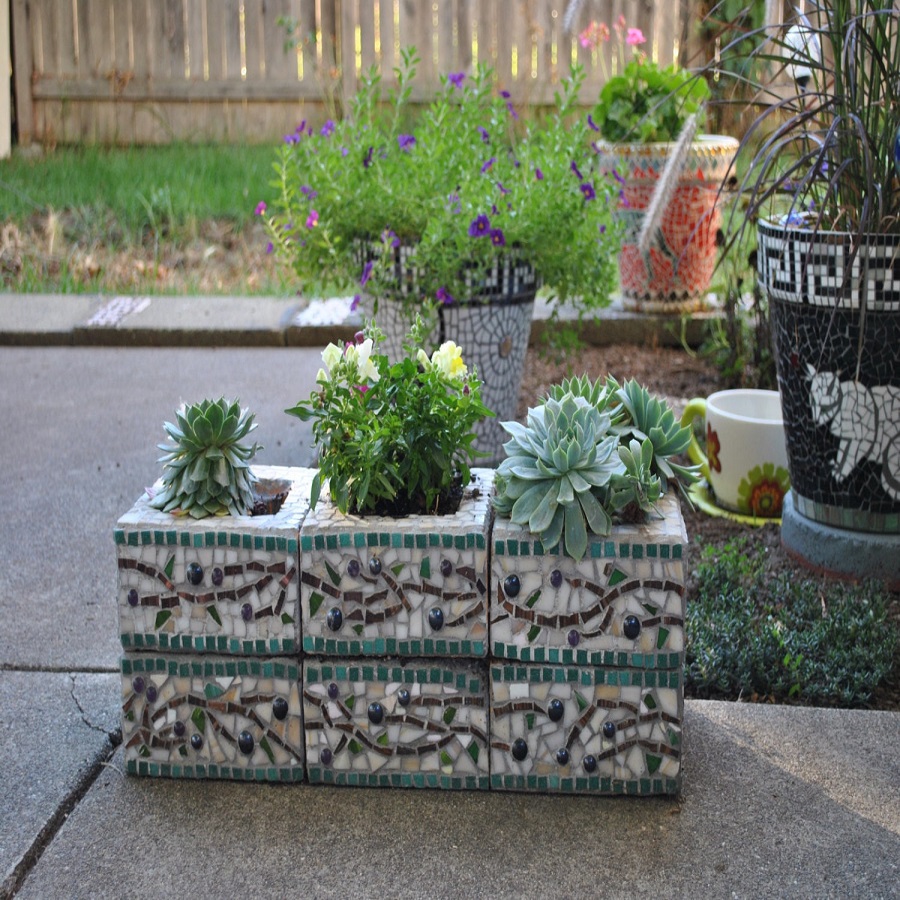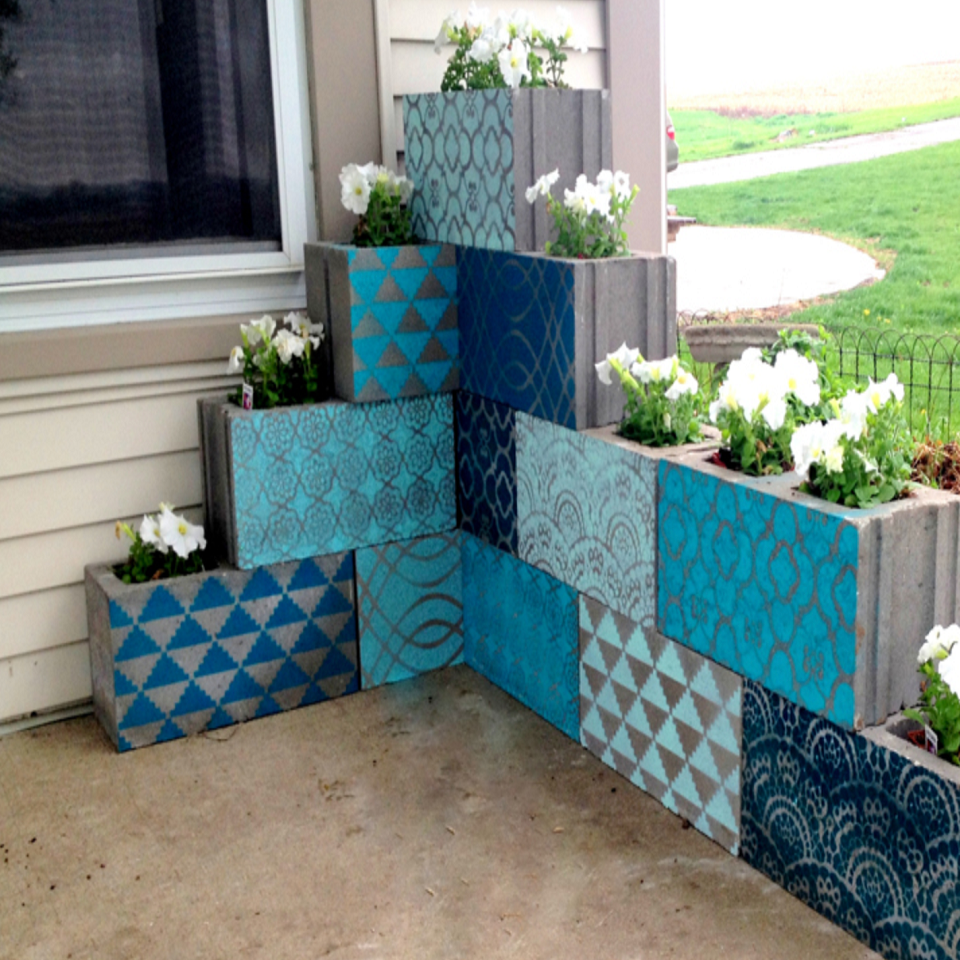Cinder blocks, often seen as a utilitarian construction material, can transform your garden into a vibrant and stylish space. By repurposing these sturdy blocks into flower pots, you can create unique arrangements that not only showcase your plants but also add a modern touch to your outdoor area. This article delves into various creative ideas for using cinder blocks as flower pots, enhancing your gardening experience.
Understanding Cinder Blocks and Their Benefits
What Are Cinder Blocks?
Cinder blocks, also known as concrete masonry units (CMUs), are lightweight, durable, and versatile. Made from a mixture of cement, water, and aggregates, they are primarily used in construction for walls and foundations. Their hollow centers make them ideal for a variety of creative projects, including gardening. The blocks are readily available at most hardware stores and can be easily manipulated to fit your desired design.
Advantages of Using Cinder Blocks in Gardening
Using cinder blocks in your garden has several benefits. First, they are highly durable, resisting weather changes and providing a stable environment for your plants. Additionally, their weight allows them to withstand wind and storms, ensuring your flower pots remain in place. Cinder blocks also have a unique aesthetic appeal; their industrial look can complement contemporary garden designs. Furthermore, the hollow spaces within the blocks can serve multiple purposes, such as housing plants, storing gardening tools, or even functioning as mini vertical gardens.

Designing with Cinder Block Flower Pots
Creating a Stacked Flower Pot Display
One of the most popular ways to utilize cinder blocks is by creating a stacked flower pot display. This method involves arranging several blocks vertically to form a tiered effect, which can add depth and height to your garden. By leaving some block openings exposed, you can plant flowers, herbs, or even small shrubs in each section. This design not only maximizes space but also allows for creative plant combinations, showcasing a vibrant array of colors and textures.
Integrating Cinder Blocks into Raised Beds
Incorporating cinder blocks into raised garden beds is another innovative idea. By using the blocks as the border for your raised bed, you can create a sturdy, low-maintenance structure that keeps soil contained and prevents weed growth. The hollow sections of the blocks can be filled with soil to plant herbs or flowers, creating a unique aesthetic and functional design. This approach is particularly beneficial for urban gardeners with limited space, as it offers a creative solution for growing a variety of plants in a compact area.
Creative Planting Ideas for Cinder Block Pots
Vertical Gardens with Cinder Blocks
Cinder blocks can be used to create stunning vertical gardens, an excellent way to utilize limited space while adding a unique focal point to your yard. By stacking blocks vertically and securing them with adhesive or mortar, you can create a vertical planter that showcases trailing plants, succulents, or colorful flowers. The hollow sections can be filled with soil and planted, allowing for diverse plant life without taking up too much ground space. This design not only maximizes your garden’s potential but also introduces a striking architectural element to your outdoor area.
Herb Gardens in Cinder Blocks
Cinder blocks are perfect for creating a dedicated herb garden. By using the hollow sections of the blocks, you can plant various herbs, such as basil, parsley, or thyme, which thrive in well-drained soil. The concrete material retains heat, providing a warm environment for your herbs to flourish. Additionally, arranging the blocks in a pattern can create an attractive centerpiece for your garden or patio. This practical use of cinder blocks allows easy access to fresh herbs while adding visual interest to your outdoor space.

Enhancing Aesthetics with Cinder Blocks
Painting and Decorating Cinder Block Pots
To elevate the aesthetic appeal of cinder block flower pots, consider painting or decorating them. Using exterior-grade paint, you can transform plain gray blocks into colorful planters that reflect your personality and style. Bright colors can liven up your garden, while neutral tones can create a more subdued, elegant look. Additionally, you can use stencils or decoupage techniques to add patterns, textures, or designs to your blocks. This personalization not only enhances the visual aspect of your garden but also allows you to create a cohesive theme.
Adding Natural Elements
Incorporating natural elements alongside cinder block flower pots can enhance their beauty and create a harmonious garden atmosphere. Surrounding the blocks with decorative stones, pebbles, or mulch can provide a polished look and help retain moisture in the soil. Furthermore, adding accessories like garden statues, wind chimes, or trellises can create an inviting environment. The combination of natural materials with the industrial aesthetic of cinder blocks can result in a visually striking garden that appeals to various tastes.
Practical Considerations for Cinder Block Flower Pots
Drainage Solutions
When using cinder blocks as flower pots, proper drainage is essential to prevent waterlogging and root rot. Fortunately, the design of cinder blocks lends itself to effective drainage solutions. Ensure that the bottom of each block has drainage holes or incorporate gravel into the soil to facilitate water movement. Additionally, consider placing a layer of landscape fabric at the bottom of each block before filling it with soil. This technique will allow excess water to escape while preventing soil from washing away.
Soil Selection for Optimal Growth
Selecting the right soil for your cinder block flower pots is crucial for promoting healthy plant growth. A high-quality potting mix that provides good drainage and aeration is ideal. You can also create your own mix by combining equal parts of peat moss, vermiculite, and compost. This combination will ensure that your plants receive the necessary nutrients while maintaining moisture balance. Regularly checking the soil’s moisture levels will help you determine when to water your plants, ensuring they thrive in their unique cinder block homes.

DIY Projects with Cinder Block Flower Pots
Creating Unique Garden Edging
Cinder blocks can serve as creative edging for garden paths or flower beds. By laying the blocks on their sides, you can create a clean, modern border that defines your garden spaces. This project not only adds structure to your garden but also allows you to utilize the blocks in a functional manner. You can even plant flowers or herbs in the top openings for a cohesive look. This approach helps prevent grass from encroaching on flower beds while enhancing the overall design of your garden.
Building Cinder Block Furniture
Another exciting project involves using cinder blocks to create outdoor furniture, such as benches or tables. By stacking blocks in a sturdy configuration and adding a wooden or stone top, you can craft unique seating or display areas for your garden. This DIY furniture is not only functional but also adds an industrial charm to your outdoor space. Customize the design and finish to match your personal style, ensuring that your garden furniture is both practical and visually appealing.
Sustainability and Eco-Friendliness
Repurposing Materials
Using cinder blocks as flower pots is an excellent way to embrace sustainability in your gardening practices. Instead of purchasing new planters made from plastic or other non-biodegradable materials, repurposing cinder blocks allows you to reduce waste and give new life to materials that might otherwise be discarded. This eco-friendly approach not only benefits the environment but also adds a unique touch to your garden design.
Maintenance Tips for Cinder Block Flower Pots
Regular Inspections and Cleaning
To ensure your cinder block flower pots remain in excellent condition, regular inspections and cleaning are essential. Check for any signs of cracks, chips, or discoloration, which may indicate wear over time. Additionally, cleaning the blocks periodically will help remove any dirt or algae that may accumulate, keeping your garden looking fresh. A simple solution of water and mild soap can be used to clean the blocks without damaging the surface.
Seasonal Care and Protection
As seasons change, so do the needs of your cinder block flower pots. During winter, consider insulating your pots to protect the roots of your plants from freezing temperatures. Wrapping the blocks with burlap or using insulating foam can help maintain a stable environment for your plants. Conversely, during the warmer months, ensure that your pots receive adequate water and sunlight, adjusting your care routine as necessary to promote optimal growth.
Conclusion: Unleashing Creativity with Cinder Blocks
Cinder block flower pots offer a unique and creative way to enhance your garden while promoting sustainability and functionality. By exploring various design ideas, planting combinations, and maintenance techniques, you can transform your outdoor space into a beautiful oasis. Embracing the versatility of cinder blocks allows you to experiment with different styles and arrangements, ultimately showcasing your personality and creativity in your gardening journey. With these innovative ideas in mind, you can start your project today, turning ordinary cinder blocks into extraordinary flower pots.
